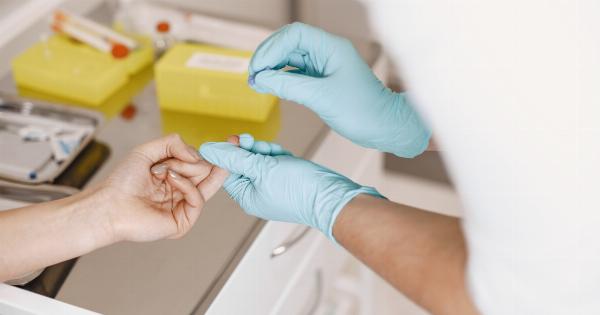Diabetes is a medical condition characterized by high blood sugar levels resulting from the inability of the body to produce or use insulin effectively. Insulin is a hormone responsible for regulating blood sugar levels in the body.
This condition affects millions of people globally, and it can lead to other severe health complications if not well managed. One of the ways to manage diabetes is through diet, and potatoes are one such food that has been of interest among people with diabetes due to its high carbohydrate content.
However, there have been concerns about the relationship between diabetes and potatoes. In this article, we will explore this relationship in detail.
The Nutritional Value of Potatoes
Potatoes are a starchy root vegetable that has been consumed for centuries in different parts of the world. It is a good source of nutrients such as vitamin C, potassium, fiber, and antioxidants.
However, potatoes are also high in carbohydrates, which can raise blood sugar levels when consumed in large amounts. According to the United States Department of Agriculture (USDA), one medium-sized potato contains 37 grams of carbohydrates, which is 12% of the recommended daily intake for an adult consuming a 2000 calorie/day diet.
The Glycemic Index of Potatoes
The glycemic index (GI) is a measure of how much a particular food can raise blood sugar levels in the body.
Foods are ranked on a scale of 0-100, with a high GI value indicating that a food can raise blood sugar levels quickly, while a low GI value means that a food can raise blood sugar levels slowly. According to a study published in the American Journal of Clinical Nutrition, potatoes have a high glycemic index value, ranging from 56-111, depending on the variety, preparation, and cooking method.
This high GI value means that potatoes can raise blood sugar levels quickly in people with diabetes, making it a food to be consumed in moderation.
The Relationship Between Potatoes and Blood Sugar Levels
People with diabetes must monitor their blood sugar levels regularly to ensure that they stay within the recommended range.
Consuming foods that can raise blood sugar levels can lead to hyperglycemia, a condition where blood sugar levels are high, which can lead to other severe health complications. Potatoes, being high in carbohydrates, can raise blood sugar levels in people with diabetes. However, several factors can influence the extent to which potatoes can raise blood sugar levels. Some of these factors include:.
- The type of potato consumed
- The cooking method used
- The portion size consumed
- The timing of consumption
- The consumption of potatoes with other foods
The Type of Potato Consumed
There are different varieties of potatoes, and each has a different nutritional profile and glycemic index value. Russet potatoes, for example, have a higher glycemic index value than sweet potatoes.
Therefore, people with diabetes may need to choose their potatoes wisely to minimize the impact on their blood sugar levels.
The Cooking Method Used
The cooking method used can also influence the GI value of potatoes. Boiled and mashed potatoes, for example, have a higher glycemic index value than roasted potatoes.
The reason is that boiled and mashed potatoes have a higher starch content, which is known to increase blood sugar levels. Therefore, roasted or baked potatoes may be a better option for people with diabetes as they have a lower glycemic index value.
The Portion Size Consumed
The amount of potato consumed can also influence blood sugar levels. It is essential to consume potatoes in moderation to prevent blood sugar spikes. Experts recommend consuming half a cup of cooked potatoes as a serving size for people with diabetes.
Consuming more than this amount can lead to a significant increase in blood sugar levels.
The Timing of Consumption
The timing of potato consumption can also influence blood sugar levels. Consuming potatoes with other foods that have a low GI value can help to slow down the rate at which blood sugar levels rise.
Therefore, it is advisable to consume potatoes as part of a well-balanced meal to minimize their impact on blood sugar levels.
The Consumption of Potatoes with Other Foods
The consumption of potatoes with other foods that have a low GI value can help to minimize their impact on blood sugar levels.
For example, consuming potatoes with spinach, broccoli, or other vegetables can help to slow down the rate at which blood sugar levels rise. People with diabetes should, therefore, aim to consume potatoes with other low GI value foods to prevent significant blood sugar spikes.
Tips for Consuming Potatoes for People with Diabetes
Here are some tips for consuming potatoes for people with diabetes:.
- Choose sweet potatoes, which have a lower glycemic index value than regular potatoes
- Avoid consuming processed potato products such as potato chips and french fries, which are high in fat and have a high glycemic index value
- Choose low GI cooking methods such as roasting and baking instead of boiling and mashing
- Consume potatoes in moderate amounts and as part of a well-balanced meal
Conclusion
Potatoes are a common food that has been of interest among people with diabetes due to its high carbohydrate content. However, potatoes have a high glycemic index value, which means that they can raise blood sugar levels quickly in people with diabetes.
The type of potato consumed, cooking method used, portion size consumed, timing of consumption, and consumption of potatoes with other foods can all influence their impact on blood sugar levels. People with diabetes, therefore, need to consume potatoes in moderation and as part of a well-balanced meal to prevent significant blood sugar spikes.





























